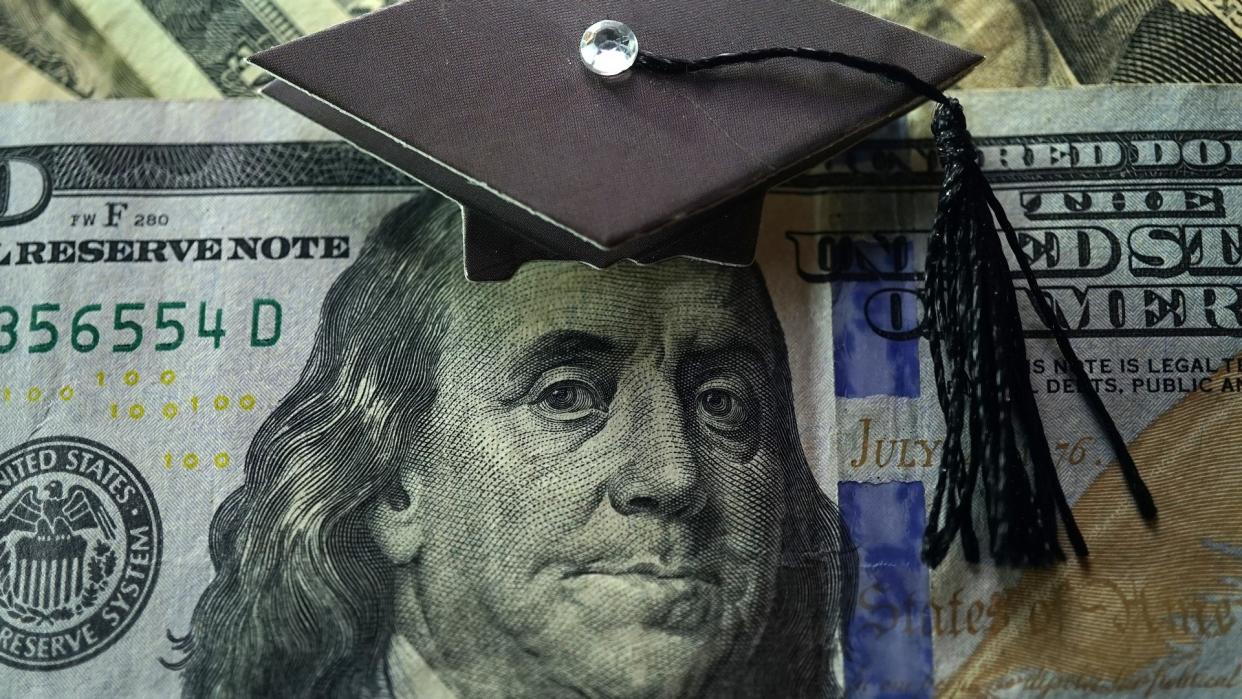Student Loans 2023: Here Are the 6 Best and Worst Ways To Pay Off Your Student Loans

Federal student loan borrowers eyeing relief from the Biden administration’s student loan forgiveness program got a big dose of disappointment last week when the U.S. Supreme Court struck the plan down. Now borrowers must figure out how to pay off their loans when payments resume in October following a three-and-a-half-year pause.
See: New Student Loan Forgiveness Rule Simplifies Process — Who Qualifies?
Find: All of the States That Will Pay Off Your Student Loans
There are good and not-so-good ways of going about this. Ideally, you’ll be able to pay down your student loan without having to cut back in other areas. Better yet, you might be able to find options that can help you qualify for other kinds of debt relief.
The one thing you don’t want to do is create a situation that can hurt you financially, though some borrowers might not have much choice.
Here’s a look at six of the best and worst ways to pay off your student loans.
Best Ways
Income-Driven Repayment (IDR) Plan
Borrowers who repay their loans under an IDR plan can have remaining balances forgiven after making a certain number of payments over a certain period of time. IDRs are designed to make your student loan debt more manageable by giving you a monthly payment based on your income and family size, according to Federal Student Aid. This is a good option if your outstanding federal student loan debt represents a big portion of your income.
Public Service Loan Forgiveness (PSLF)
If you work full-time for a government or not-for-profit organization, you might qualify for forgiveness of the entire remaining balance of your Direct Loans after you’ve made 120 qualifying payments, or 10 years’ worth. To benefit from PSLF, Studentaid.gov states you should repay your federal student loans under an IDR plan.
Also, if you’ve been denied loan forgiveness under PSLF because one or all of the payments you made on your Direct Loans were under a nonqualifying repayment plan, you might be eligible for Temporary Expanded Public Service Loan Forgiveness.
Teacher Loan Forgiveness
This option is available to federal student loan borrowers who teach full-time for five complete and consecutive academic years in certain elementary or secondary schools — or work at educational service agencies that serve low-income families. If you qualify, you might be eligible for forgiveness of up to a combined total of $17,500 on eligible federal student loans.
Student Loan Discount
Federal student loan borrowers might qualify for interest-rate discounts if they refinance the loan with a private lender. This means you’ll lose the perks that come with a federal student loan, and you might also have to pay a higher interest rate. However, you can get reduced interest rates of 0.25% or higher by signing up for automatic payment discounts, loyalty discounts with your current bank, on-time graduation discounts, and on-time payment discounts.
Worst Ways
Declare Bankruptcy
This is not the route you want to take if you can possibly avoid it. Declaring bankruptcy to get out from under your student debt will ding your credit score and make it more difficult to get loans in the future. But it might be the route many cash-strapped borrowers are stuck with when federal student loan payments resume.
As previously reported by GOBankingRates, about 20% of student loan borrowers have already defaulted on a loan, according to Jonathan Petts, CEO of Upsolve, a non-profit organization that helps individuals file bankruptcy without using a private attorney. The total amount already in default is more than $124 billion. Federal education officials have warned of even more defaults once payments resume.
Before considering bankruptcy, you need to understand the rules governing federal student loans. According to Federal Student Aid, you can have your federal student loan discharged in bankruptcy “only if you file a separate action” known as an “adversary proceeding.” With this action, you request that the bankruptcy court find that repayment would impose undue hardship on you and your dependents.
Hold Off on Saving for Retirement
Another option is to pause making contributions to your 401(k) plan, IRA or other retirement account and putting that money toward student debt. But you should do everything in your power to avoid this strategy. Saving for retirement is one of the most important financial moves you can make — and sticking diligently to your retirement plan should be a high priority, according to financial experts.
If you are young, you might decide that putting retirement savings on hold for a few years to pay down student debt makes sense because you have plenty of time to make up the shortfall. A better option is to figure out ways to cut down on discretionary spending and put those savings toward your student debt, instead.
More From GOBankingRates
This article originally appeared on GOBankingRates.com: Student Loans 2023: Here Are the 6 Best and Worst Ways To Pay Off Your Student Loans
